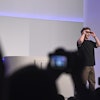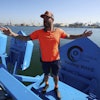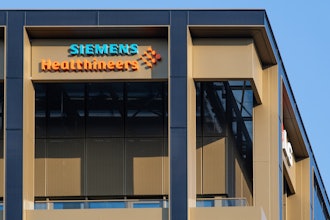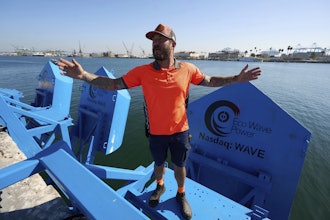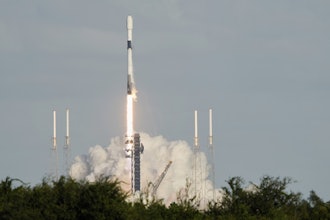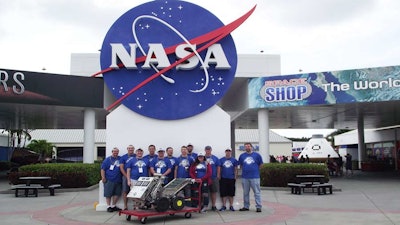
RAPID CITY, S.D. (AP) — With their imaginations fixed on the stars, students at South Dakota School of Mines & Technology are building a robot that may someday rove across the sands of Mars for NASA.
The "Moonrockers" rover is the product of two years of labor by an interdisciplinary team of more than 20 engineering students, all cooperating in hopes of winning NASA's eighth annual Robotic Mining Competition. Last year, the School of Mines team placed second among about 50 entries for its creation of a bot capable of piloting itself. Now, team members Dakotah Rusley, 21, and Chas Hartman, 24, are setting their sights on improving their past success.
"That's what we're looking forward to this year, is spring-boarding off that," said Rusley, a computer engineering student at Mines. "If we did it last year, how can we make it better?"
Space travelers of the future will need a cheap and abundant source of water, oxygen and fuel to power their ships through the solar system, the Rapid City Journal reported. Based on findings by the Curiosity rover, scientists have come to believe that "icy regolith" found in the ancient clay of Mars is a plentiful source for all three.
"The water can be used for human consumption, hygiene, (to) make rocket propellant for the journey home, grow plants, provide radiation shielding and for use in various manufacturing processes," reads a description of the competition on NASA's website.
To get at and efficiently stockpile that icy regolith will require a fleet of sturdy, reliable, and autonomous robots sent to the red planet in advance of any manned spacecraft.
That's where young, innovative engineers like Rusley and Hartman come into the picture.
The $7,000 prototype they've designed is equipped with a conveyor of metal scoops that feed into a hopper capable of hauling roughly 65 to 176 pounds of mined material at a time. Weighing in at about 130 pounds, the aluminum "Moonrockers" rover has an articulated frame that ensures that at least three of its four wheels will be in contact with the rough Martian terrain at all times.
Besides the motors and computer hardware, every piece of the rover has been designed and handcrafted or 3-D printed by the Mines students. The modular computer and electrical interface has been deliberately designed for maximum ease of use on the competition floor. If a system malfunctions, repairs could be conducted by simply unplugging the affected area and removing it to be tinkered with outside the robot's chassis.
"It's so even someone like me can use it," said Hartman, a mechanical engineering student at Mines.
Autonomy of motion is key, however, in circumventing the challenges of communicating with the rover over vast gulfs of space.
"If this thing is on Mars and it gets stuck in a hole or on a rock, the signal delay is such that by the time you send a signal to avoid the rock, the rover is already stuck," Rusley said.
Both Rusley and Hartman have enjoyed the challenge of solving that problem and many of the others that come with designing a rover for NASA. Before this project, neither of them had had much experience working in robotics.
"Now it's all I want to do," Hartman said.
This year's NASA competition will run May 22-26.

